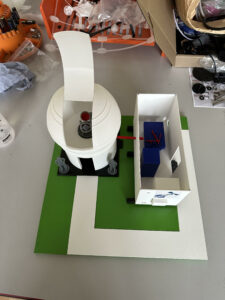 As the 54th edition of the Paris Air Show is taking place right now, the world’s biggest aerospace and space trade show, many technology providers are demonstrating how their technology can help these aerospace experts manufacture improved products. If it’s quite common to see industrial AM providers make headlines, one should not forget the potential of smallest 3D printers to build prototypes necessary to evaluate the feasibility of various systems.
As the 54th edition of the Paris Air Show is taking place right now, the world’s biggest aerospace and space trade show, many technology providers are demonstrating how their technology can help these aerospace experts manufacture improved products. If it’s quite common to see industrial AM providers make headlines, one should not forget the potential of smallest 3D printers to build prototypes necessary to evaluate the feasibility of various systems.
That’s something the French aerospace lab ONERA understood as it 3D printed a demonstrator to evaluate the feasibility of ground-to-satellite bidirectional optical links. Put simply, optical satellite links serve a number of application scenarios, such as communications or navigation. Named FEELINGS which stands for FEEder LINks Ground Station, ONERA’s demontstrator is open to the industrial community and academia, and aims to develop and validate the scientific and technological concepts of the ground stations that will be the foundation for future optical space networks.
This means that the demonstrator ambitions to validate the models of optical propagation through the atmosphere, provide access to the sky to partners under controlled conditions (characterisation and models) and test the technologies needed to focus laser beams for optical communications with mobile phones, under different conditions of use.
At the manufacturing level, the team at ONERA uses CREALITY CR10 Smart PRO and CREALITY Halot One 3D printers. The Smart PRO is an FDM 3D printer that enables to manage 3D printing anytime and anywhere thanks to an application. The Halot 3D printer processes resin materials and comes with a self-developed integral light source print with high precision.
FEELINGS comes in the form of a 600 mm diameter telescope protected by a 4 m dome. The adjoining container houses the scientific instrumentation including the FELIN adaptive optical bench, designed to create bidirectional links with geostationary satellites compensated for atmospheric turbulence, an essential feature for establishing these feeder links. FEELINGS features a high-power laser, developed by ONERA, emitting a wavelength of 1.55 μm.
The demonstrator can also track satellites in low earth orbit (LEO). It also incorporates a meteorological and turbulence characterisation system. This mobile unit is currently installed on the Fauga-Mauzac site. Its first beam is planned for the end of 2023 to seize the first opportunities for high-speed optical links in 2024.
Remember, you can post free of charge job opportunities in the AM Industry on 3D ADEPT Media or look for a job via our job board. Make sure to follow us on our social networks and subscribe to our weekly newsletter : Facebook, Twitter, LinkedIn & Instagram ! If you want to be featured in the next issue of our digital magazine or if you hear a story that needs to be heard, make sure to send it to contact@3dadept.com





